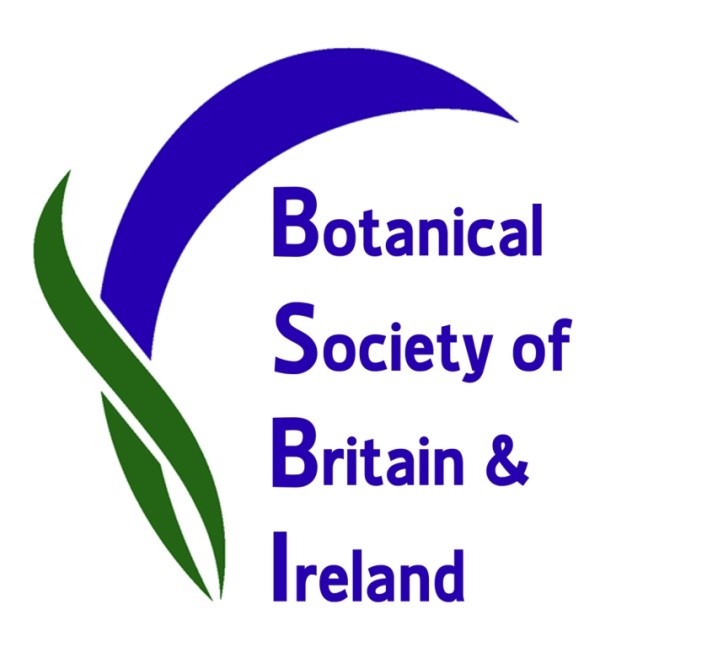Dumfriesshire Botany Group at Powhillon Farm 30th July 2023
On a fine day we gathered under the broad open skies at Powhillon Farm at the kind invitation of Dave Pickett the WWT Caerlaverock Manager. Dave stayed with us all day and guided us across the ditches and seawalls to reach the areas we intended to visit. The aim was to look again at some of the ground we saw in 2022 and to then explore an area of wet fields we did not reach last year.
Pretty much all of the land we visited would be naturally prone to flooding on high tides. Some of it is high saltmarsh or the brackish transition but other areas are protected by sea walls and currently used as rough grazing.
Our initial focus was on NY0566 which includes a meandering section of the Lochar Water channel which separates us from Caerlaverock East park. We revisited areas we had seen in 2022 with the hope of seeing the exciting species we saw on that occasion. On the way we saw again the typical upper saltmarsh species like Sea Club-rush Bolboschoenus maritimus and patches of Common Reed Phragmites australis especially in the ditches. In the enclosed fields the old saltmarsh influence was still evident with patches of Slender Spike-rush Eleocharis uniflora, Parsley Water-dropwort Oenanthe lachenalia, Spear-leaved Orache Atriplex prostrata and the occasional False Fox Sedge Carex otrubae. The Spiny Restharrow Ononis spinosa was nice to see again. Despite searching the scrapes where we had seen the Mudwort Limosella aquatilis last year we could not find it.* We did see the Lesser Centaury Centaurium pulchella where it had been last year together with other things seen before including Marsh Yellow-cress Rorippa palustris, but also some new plants. These included Scented Mayweed Matricaria chamomilla a plant that is an infrequent arable weed and largely coastal in Dumfriesshire. There were also some interesting Knotgrasses.
The common Redshank Persicaria maculosa was present with Pale Persicaria Persicaria lapathifolia distinguishable from the much commoner former species by the greenish white flowers and abundance of yellow glands. More interesting was the presence of a large leaved Polygonum. A photo of this was shown to John Akeroyd the BSBI Docks referee and he agreed that this looked like Northen Knotgrass Polygonum boreale. The leaves are larger and broader than the much more Common Knotgrass Polygonum aviculare and Equal-leaved Knotgrass Polygonum arenastrum and importantly are petiolate. This is a first record for Dumfriesshire though it has been recorded in adjacent Kirkcudbrightshire. This is about as far south as the species has been recorded in Britain and in this location looks natural.
Another species present was Ray’s Knotgrass Polygonum oxyspermum subsp rayii. This is a coastal species more frequently encountered as a prostrate plant on sand or shingle near the strandline. However the plants here were growing amongst other vegetation and were upright. It is distinguishable by the rather glaucous similar sized leaves and the large glossy nuts sticking out of the perianth. The latter were rather young in both species and a later visit was needed to confirm ID.
We moved on after lunch to look at wet fields further west. There was a nice patch of Bladder Sedge Carex vesicaria just behind the lunch stop. The fields south of an old Alder Alnus glutinosa woodland were particularly wet and had not been grazed for a while. We had to push through Common Reed Phragmites australis to get into the field. There was a lot of Hard Rush Juncus inflexus, Bottle Sedge Carex rostrata, Sharp-flowered Rush Juncus acutiflorus and the occasional spikes of Northern Marsh-orchid Dactylorhiza purpurella though these were all past flowering. The woodland proved difficult to access with a deep ditch protecting it from the south and a tangle of fallen trees and branches. It looked like an old woodland that occupied a permanently wet area. The wood has some well grown White Willow Salix alba and one hybrid willow was Salix x smithiana (Goat Willow Salix caprea x Osier Salix viminalis).
The next field had to be accessed along the sea wall. It had patches of very wet ground with Common Spike-rush Eleocharis palustris. There was an unexpected area dominated by Common Cottongrass Eriophorum angustifolium. This might be an area of peat left over from when this whole area was part of the large Lochar Mosses. As part of our attempt to get better coverage of the bramble flora of Dumfriesshire we took some photos of brambles in the hedges and in rough areas. These included Boreal Bramble Rubus nemoralis, Grey-felted Bramble Rubus polyanthemus and Retrorse-toothed Bramble Rubus dasyphyllus. All have been identified or confirmed by Angus Hannah.
*A repeat visit took place on 27 August to check for mature fruit on the two Knotgrass species. The mature nuts of Northern Knotgrass were brown with concave faces on three sides and 3.5×2.25 which fits the description. The shiny mature seeds of Ray’s Knotgrass sticking out of the perianth confirmed its identity. We also saw 12 plants of Mudwort Limosella aquatica in the same place as last year. They appear to be late developers.
Chris Miles
BSBI county recorder for Dumfriesshire VC73 – see bsbi.org/dumfriesshire

